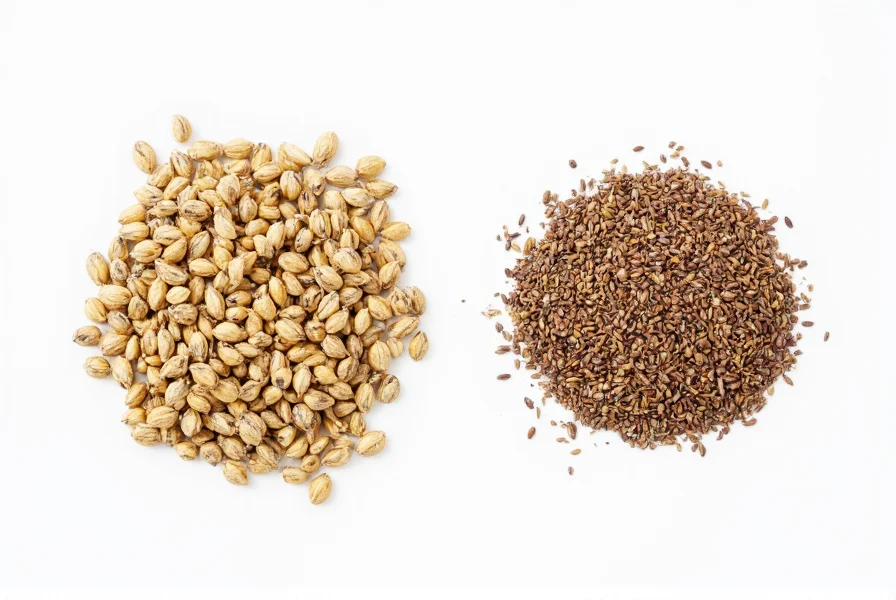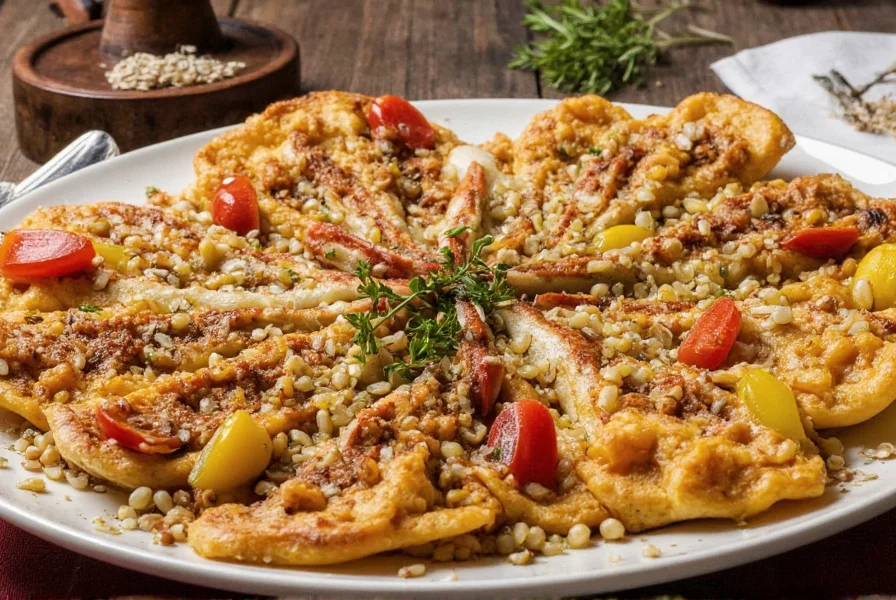Many home cooks confuse caraway and cumin because their seeds look similar—both are small, crescent-shaped, and brown. However, these spices come from different botanical families and create dramatically different flavor experiences in cooking. Understanding the caraway seeds vs cumin seeds distinction helps elevate your culinary creations with precision.
Botanical Background: More Than Just Seed Cousins
Despite their visual similarities, caraway and cumin belong to separate plant families. Caraway (Carum carvi) grows as a biennial plant in the Apiaceae family, which includes parsley and dill. The spice comes from its ripe fruit, commonly called seeds. Cumin (Cuminum cyminum), meanwhile, belongs to the same family but is a different genus entirely. This botanical distinction explains their flavor differences.
Physical Characteristics Comparison
| Characteristic | Caraway | Cumin |
|---|---|---|
| Seed shape | Longer, thinner crescents (3-6mm) | Shorter, plumper crescents (4-5mm) |
| Color | Light to medium brown | Dark brown to reddish-brown |
| Aroma | Sweet, anise-like with citrus notes | Earthy, warm, slightly pungent |
| Taste profile | Sweet first, then warm with licorice notes | Earthy upfront, warm middle, slightly bitter finish |
| Primary flavor compounds | Carvone (60-70%) | Cuminaldehyde (30-50%) |
Culinary Applications: When to Use Each Spice
Caraway shines in European and Central European cuisine. It's essential in rye bread, sauerkraut, goulash, and Scandinavian dishes. The spice complements cabbage, potatoes, and pork particularly well. Many bakers toast caraway seeds before use to enhance their sweet, citrusy notes without overwhelming bitterness.
Cumin dominates in Middle Eastern, Indian, North African, and Mexican cooking. It's fundamental in chili powder, curry blends, and taco seasoning. Unlike caraway, cumin benefits from dry toasting to mellow its natural bitterness while intensifying its earthy warmth. Professional chefs often add cumin early in cooking to allow its flavors to meld with other ingredients.
Substitution Guidance: Can I Replace One With the Other?
While caraway and cumin look similar, they're generally not interchangeable. Substituting cumin for caraway introduces unwanted earthiness that overpowers delicate dishes like rye bread. Conversely, using caraway in chili creates an unexpected licorice note that clashes with traditional flavors.
If you must substitute:
- Replace caraway with equal parts fennel seeds plus a pinch of anise seed
- Substitute cumin with equal parts coriander plus a pinch of chili powder
Understanding when to use caraway instead of cumin prevents recipe disasters while expanding your spice knowledge.

Nutritional Profiles: Health Benefits Compared
Both spices offer nutritional benefits but with different strengths. Caraway contains higher levels of vitamin E and certain antioxidants that support digestive health. Traditional medicine often uses caraway for relieving bloating and indigestion.
Cumin provides more iron and calcium per serving. Studies suggest cumin may help regulate blood sugar and improve cholesterol levels. The spice's antimicrobial properties make it valuable in food preservation beyond flavor enhancement.
Storage Recommendations for Maximum Freshness
To preserve flavor, store both spices in airtight containers away from light and heat. Whole seeds maintain potency for 2-3 years, while ground versions lose flavor within 6-12 months. For the most vibrant caraway vs cumin flavor comparison, toast whole seeds just before use—this releases essential oils that create their distinctive aromas.
Common Misconceptions Clarified
Many believe caraway and cumin come from the same plant family—they don't. Others think they're regional names for the same spice, which is incorrect. The confusion often stems from their visual similarity and shared use in some European cuisines.
Another misconception: that caraway is just "sweet cumin." In reality, their chemical compositions differ significantly. Caraway's dominant compound carvone creates its characteristic anise flavor, while cumin's cuminaldehyde produces earthy warmth.

Practical Application Tips
When experimenting with these spices, consider their flavor release patterns. Caraway's sweetness emerges gradually, making it ideal for slow-cooked dishes. Cumin's earthiness appears immediately, so it works best when added early in cooking to mellow its intensity.
For baking applications requiring caraway, lightly crush seeds before incorporating them into dough. In savory dishes using cumin, bloom the spice in oil first to maximize flavor extraction. These small technique adjustments make significant differences in final results.
Conclusion: Mastering the Flavor Distinction
Recognizing the difference between caraway and cumin transforms your cooking precision. While both enhance savory dishes, their unique flavor signatures serve different culinary purposes. Caraway's sweet anise notes complement European comfort foods, while cumin's earthy warmth anchors global spice blends. By understanding caraway seeds vs cumin seeds characteristics, you'll make more informed choices that elevate your dishes from good to exceptional.
What's the main difference between caraway and cumin?
The primary difference lies in their flavor profiles. Caraway has a sweet, anise-like flavor with citrus notes, while cumin offers earthy, warm notes with a slightly bitter finish. They come from different plant species and are not interchangeable in most recipes.
Can I substitute cumin for caraway in rye bread?
No, substituting cumin for caraway in rye bread creates an unpleasant flavor mismatch. Cumin's earthiness overpowers the delicate balance in traditional rye bread. For proper caraway substitution, use fennel seeds with a pinch of anise seed instead.
Why do caraway and cumin look so similar?
Both spices produce small, crescent-shaped seeds because they belong to the same plant family (Apiaceae), though different genera. This botanical relationship explains their visual similarity despite significant flavor differences.
Which spice has more health benefits, caraway or cumin?
Both offer unique benefits. Caraway contains higher vitamin E levels and supports digestive health, while cumin provides more iron and may help regulate blood sugar. Neither is superior—they complement different dietary needs.
Frequently Asked Questions
What's the main difference between caraway and cumin?
The primary difference lies in their flavor profiles. Caraway has a sweet, anise-like flavor with citrus notes, while cumin offers earthy, warm notes with a slightly bitter finish. They come from different plant species and are not interchangeable in most recipes.
Can I substitute cumin for caraway in rye bread?
No, substituting cumin for caraway in rye bread creates an unpleasant flavor mismatch. Cumin's earthiness overpowers the delicate balance in traditional rye bread. For proper caraway substitution, use fennel seeds with a pinch of anise seed instead.
Why do caraway and cumin look so similar?
Both spices produce small, crescent-shaped seeds because they belong to the same plant family (Apiaceae), though different genera. This botanical relationship explains their visual similarity despite significant flavor differences.
Which spice has more health benefits, caraway or cumin?
Both offer unique benefits. Caraway contains higher vitamin E levels and supports digestive health, while cumin provides more iron and may help regulate blood sugar. Neither is superior—they complement different dietary needs.











 浙公网安备
33010002000092号
浙公网安备
33010002000092号 浙B2-20120091-4
浙B2-20120091-4